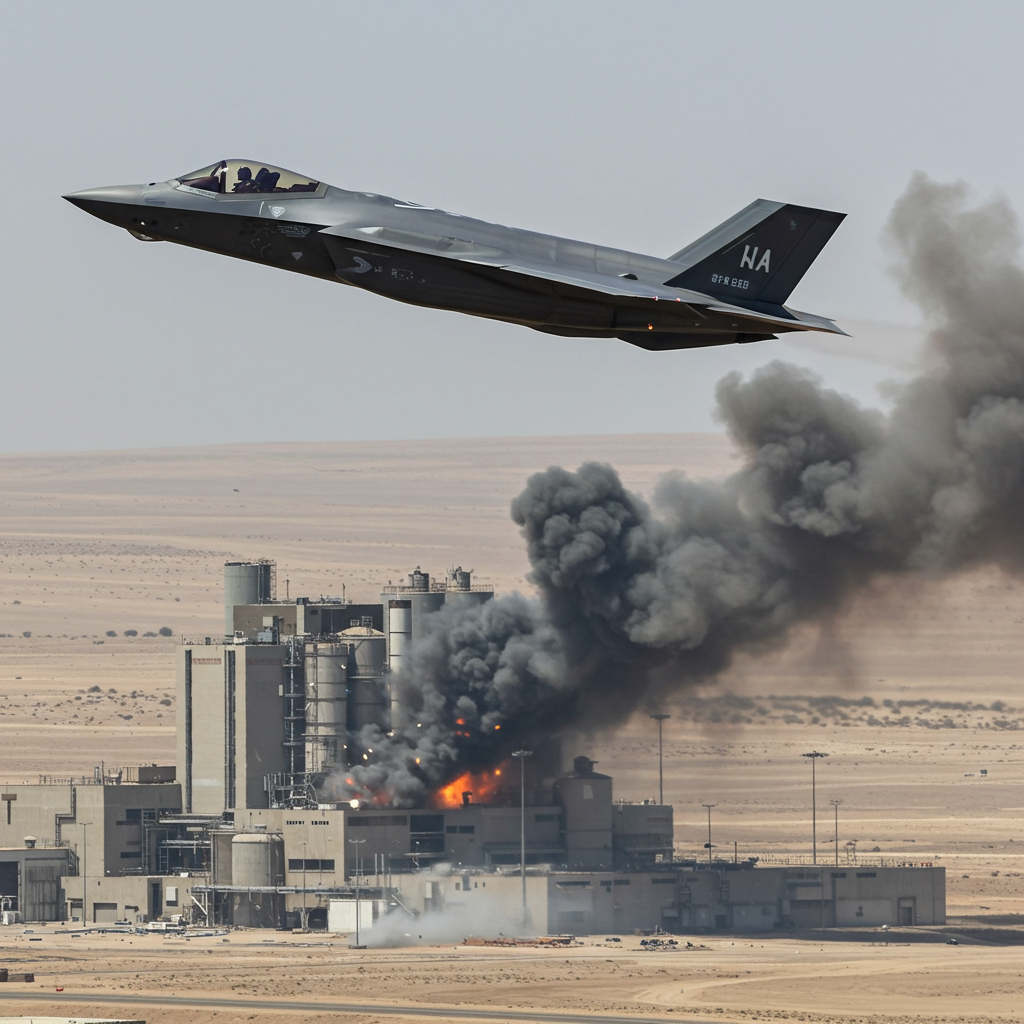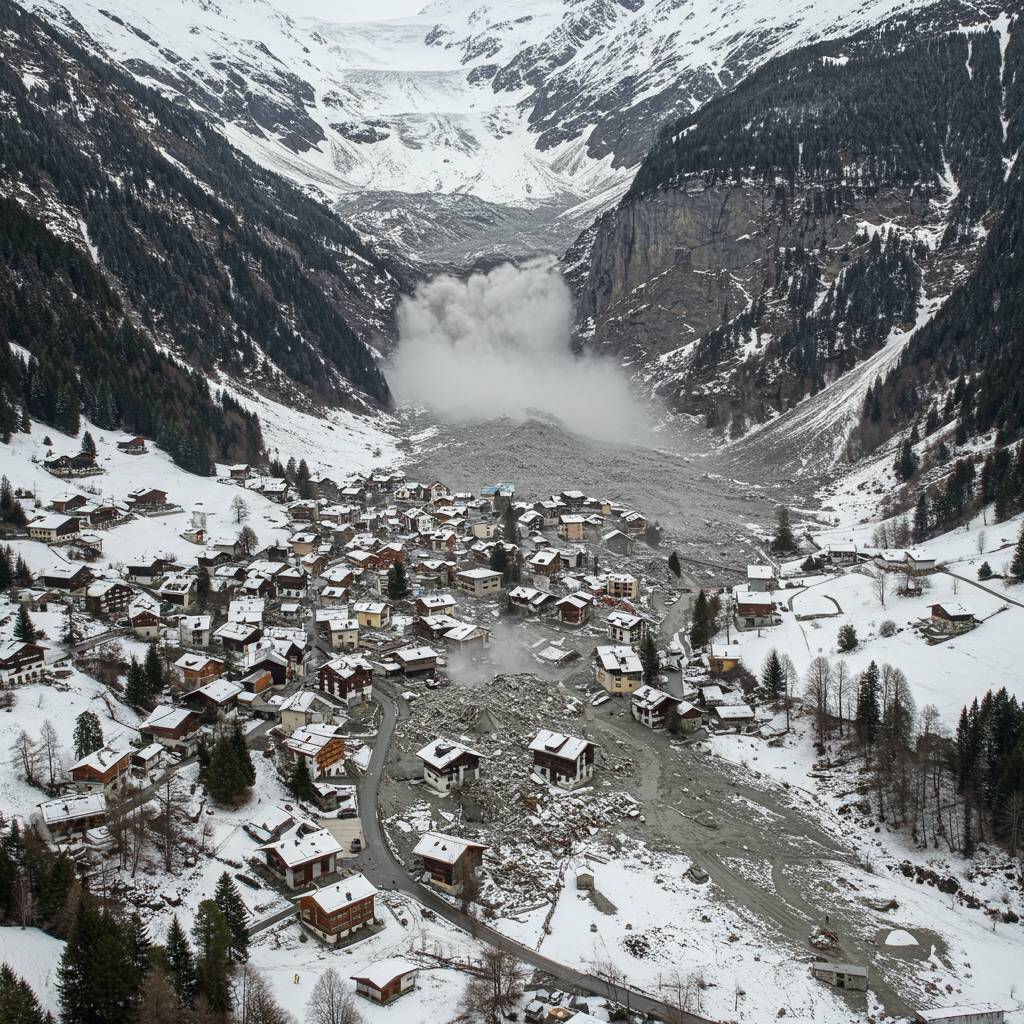Middle East Conflict Deepens: US Joins Israel-Iran Strikes as Nuclear Talks Collapse
The week-long air war between long-time adversaries Israel and Iran intensified significantly, plunging the Middle East further into crisis. On Saturday, Israel reported carrying out multiple strikes against Iranian military targets in southwestern Iran, while reports emerged of attacks on Iranian nuclear facilities. This escalation unfolded as diplomatic efforts to curb Iran’s nuclear program reached a stalemate, with Tehran dismissing European proposals as “unrealistic.”
Adding a dramatic new dimension to the conflict, former U.S. President Donald Trump announced that the United States had conducted “successful attacks” on three key Iranian nuclear sites: Fordo, Natanz, and Esfahan. Trump stated that U.S. B-2 stealth bombers were used in these operations and were safely outside Iranian airspace afterward. This direct U.S. military action came sooner than the two-week window Trump had previously suggested he would take to decide on potential U.S. involvement.
Heavy Strikes and Rising Casualties
Both sides reported significant military actions and casualties. Israeli military officials confirmed conducting a series of strikes, targeting dozens of military sites across Iran. A major focus of these strikes appeared to be Iranian military infrastructure and personnel. Israel also claimed a significant intelligence achievement, stating it killed veteran Iranian commander Saeed Izadi, who headed the Quds Force’s Palestine Corps, in a strike in Qom. Israel linked Izadi to financing and arming Hamas before the October 7, 2023 attack. Israel later claimed killing a second Quds Force commander, Benham Shahriyari.
Iran’s Revolutionary Guards reported five members killed in attacks in Khorramabad. While not specifically mentioning Izadi, Iranian media confirmed Israel attacked a building in Qom, resulting in a 16-year-old’s death and two injuries according to initial reports. Iran’s Health Ministry reported at least 430 people killed and 3,500 injured in Iran from Israeli attacks, a figure higher than 400 cited in some reports but lower than the 639 reported by the U.S.-based Human Rights Activists News Agency (HRANA), which included military figures, nuclear scientists, and civilians. HRANA’s civilian death toll stood at over 260.
On the Israeli side, local authorities reported 24 civilians killed by Iranian missile attacks. More than 450 Iranian missiles were reportedly fired towards Israel, causing 1,272 injuries according to the Israeli prime minister’s office, with 14 in serious condition. Early Saturday, air raid sirens blared across central Israel and the West Bank, with missile interceptions visible over Tel Aviv. An Iranian drone strike damaged a residential building in northern Israel, though without casualties. Reports also surfaced of both sides hitting hospitals, with Iran claiming Israel attacked three hospitals and Israel reporting an Iranian missile hit a hospital in Beersheba, though Israel denied targeting hospitals directly, citing potential collateral damage.
Attacks on Nuclear Facilities Raise Alarms
The reported attacks on Iran’s nuclear infrastructure added a dangerous new dimension. The International Atomic Energy Agency (IAEA) confirmed an Israeli strike on a centrifuge manufacturing workshop at the Isfahan facility, noting it contained no nuclear material. However, the head of the IAEA warned that while no immediate radiological danger occurred, attacks on nuclear facilities severely degrade safety and security and could potentially lead to radiological leaks. Gulf Cooperation Council ambassadors expressed concerns to the IAEA chief about the safety of nuclear facilities near their countries and the “dangerous repercussions” of targeting them.
Following Trump’s claims of U.S. strikes on Fordo, Natanz, and Esfahan, experts highlighted the significance of hitting underground sites like Fordo, which could potentially require bunker-busting bombs like the GBU-57 Massive Ordnance Penetrator, deployable by B-2 bombers. Reports indicated B-2 bombers were being deployed to Guam amidst regional tensions, a strategic location, though US officials didn’t confirm a direct link to the Middle East situation. The U.S. has also deployed other military assets, including tanker aircraft, fighter jets, and an aircraft carrier, to the region.
Iran maintains its nuclear program is solely for peaceful purposes and stated it would not negotiate over its defensive capabilities or halt nuclear activity “under any circumstances” while under threat, although it is open to discussing confidence-building measures. Iran’s enrichment levels are reportedly nearing 90% (weapons-grade), a significant increase since the U.S. withdrew from the 2015 Joint Comprehensive Plan of Action (JCPOA).
Diplomatic Deadlock and Accusations
Diplomatic efforts struggled to gain traction amidst the escalating violence. Iran’s Foreign Minister Abbas Araqchi met with European counterparts (Britain, France, Germany) and the EU in Geneva. However, a senior Iranian official characterized the European proposals as “unrealistic” and a hurdle to agreement, stating Iran would review them but insisted zero enrichment was a “dead end.” Araqchi later stated there was “no room for negotiations with the U.S. until Israeli aggression stops.”
At the Organisation of Islamic Cooperation (OIC) meeting in Istanbul, Araqchi accused the U.S. of involvement in Israel’s actions “from day one” and questioned negotiating with the U.S. while Iran was under bombardment, stating US involvement would be “very dangerous.” The U.S. Secretary of State denied direct involvement. Meanwhile, President Trump publicly contradicted the assessment of his own intelligence community, including Director of National Intelligence Tulsi Gabbard, who testified that Iran was not working on a nuclear warhead, stating they were “wrong” and that Iran could obtain a weapon in “weeks or certainly… months.” Trump appeared dismissive of the European diplomatic initiative, suggesting Iran preferred direct talks with the U.S., despite Iran’s refusal to negotiate under fire.
International calls for de-escalation intensified, with Turkey, Russia, China, and the UN Secretary-General urging an immediate halt to the conflict. Russian President Vladimir Putin stated there was “no evidence” Iran was preparing to acquire nuclear weapons and voiced concerns for the safety of Russian specialists at Iran’s Bushehr nuclear plant, stating Trump and Israel agreed to safeguard them. Some analysts view the U.S. military posturing as “coercive diplomacy” aimed at creating leverage for negotiations.
The situation remains highly volatile. Yemen’s Houthi rebels threatened to attack U.S. ships in the Red Sea if the U.S. joined Israel’s campaign. An Iranian official reportedly suggested the Israeli Shimon Peres Negev Nuclear Research Center could be targeted if the war continued. Israel’s Foreign Minister stated Israeli strikes had delayed Iran’s potential nuclear capability by 2-3 years and affirmed Israel is preparing for a “long war.” The UN chief warned the parties were “racing toward” uncontrollable chaos.




